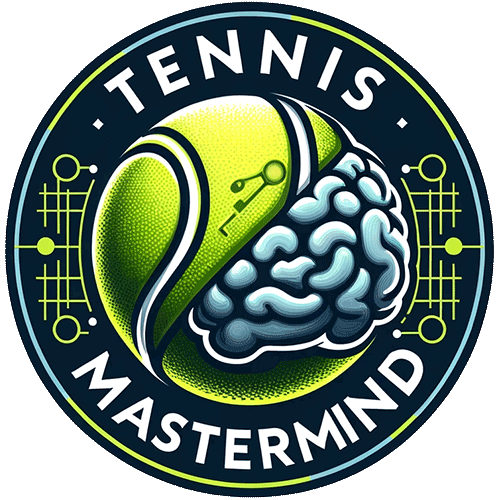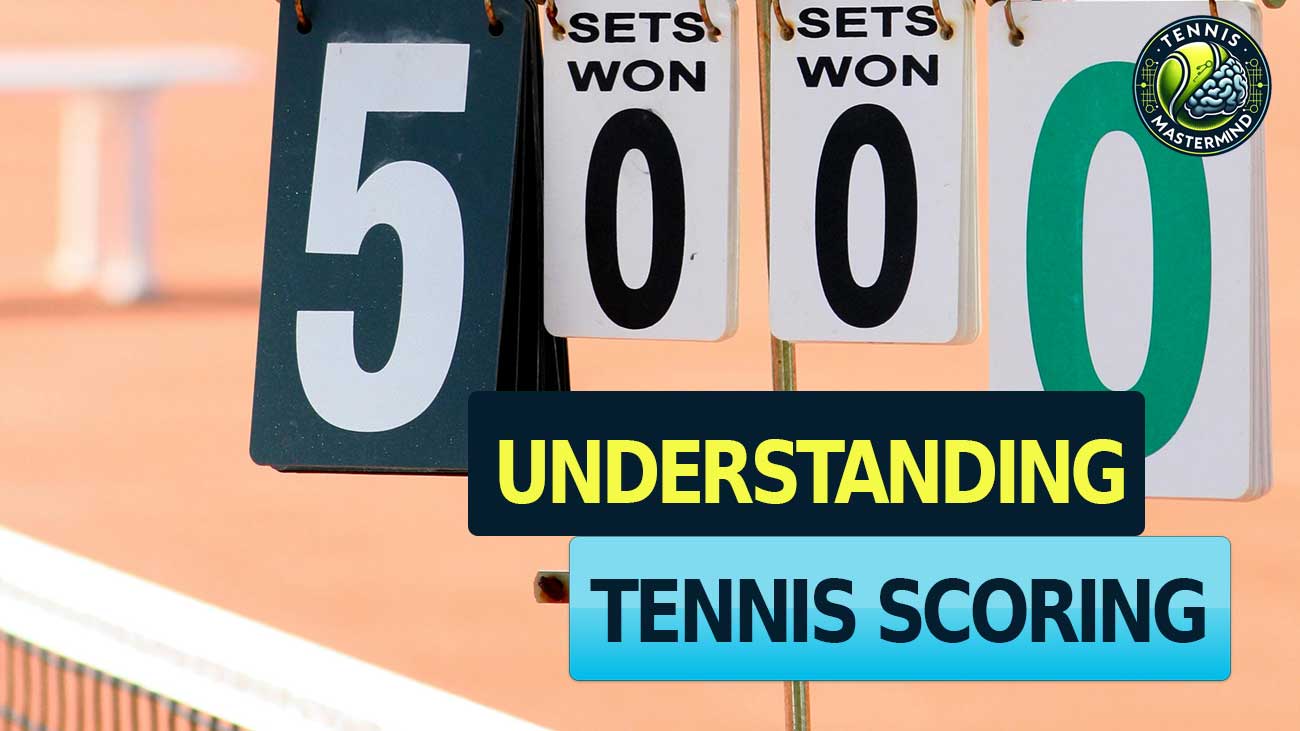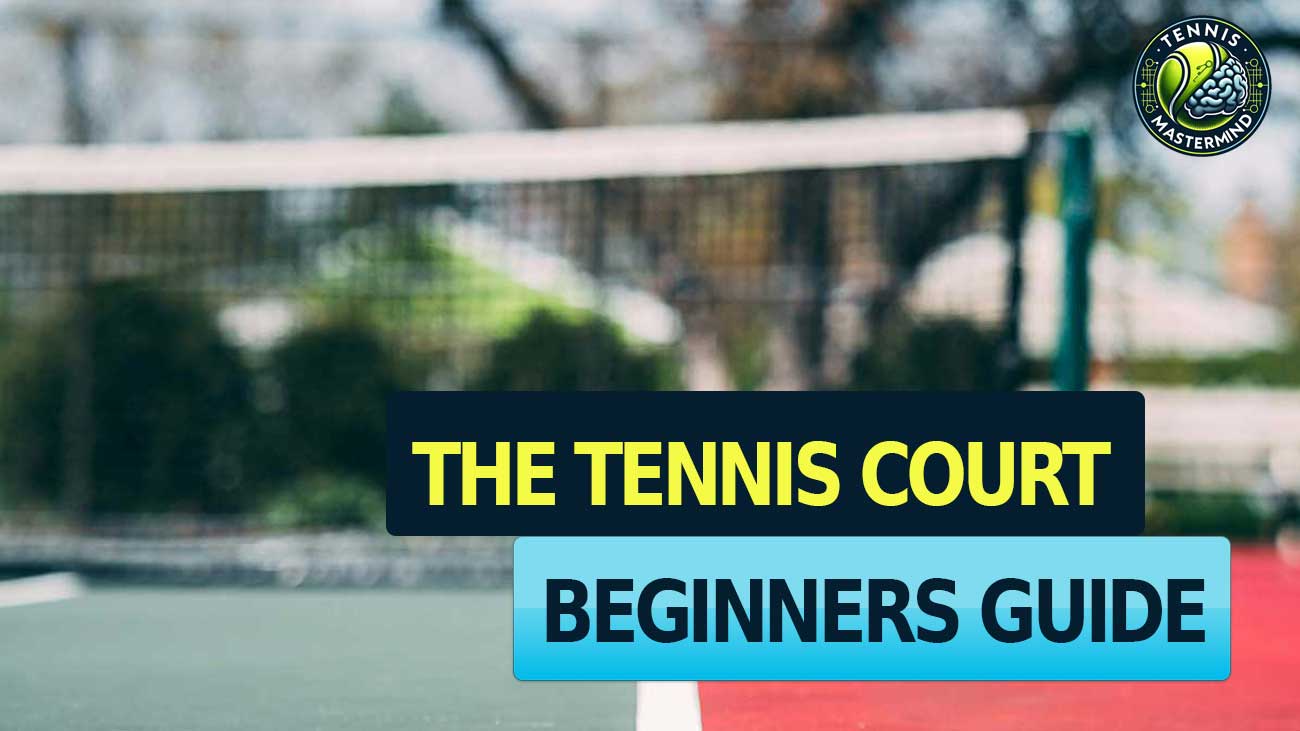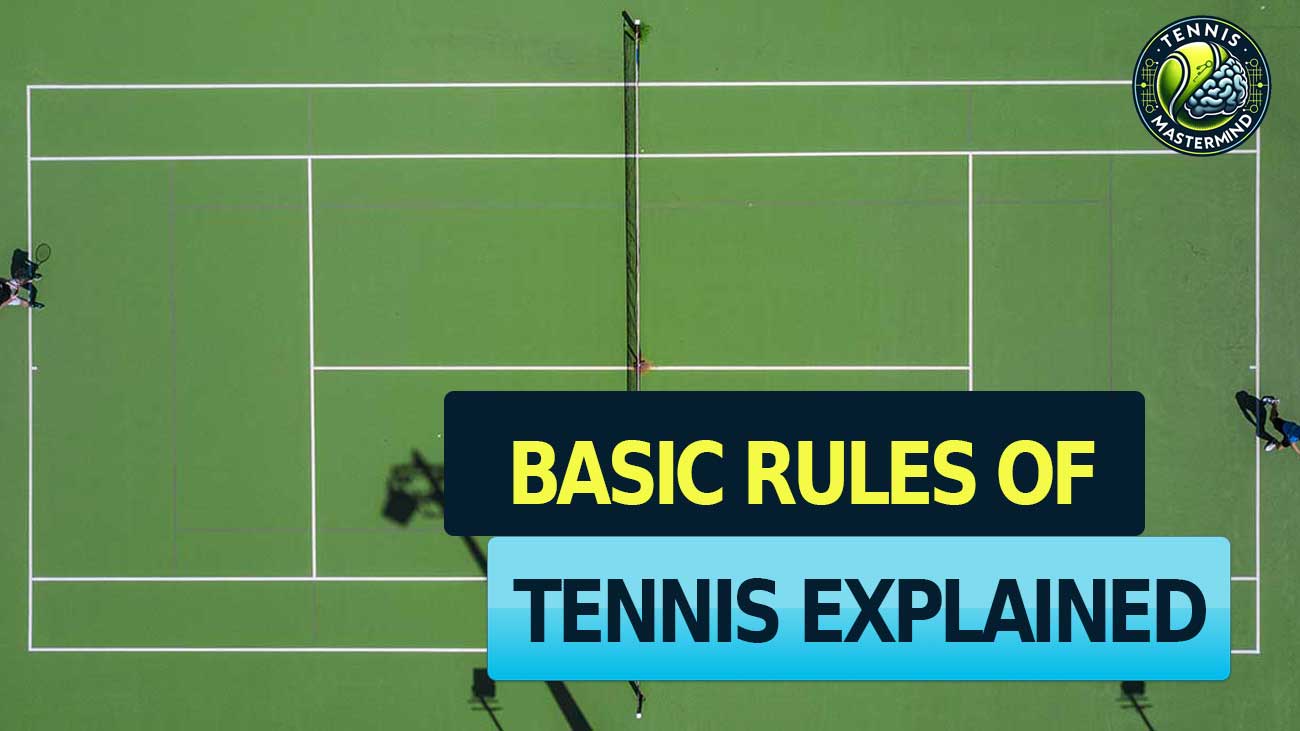Have you ever watched a tennis match and found yourself puzzled by the scoring system? Here’s an interesting fact: tennis matches are broken down into games, sets, and matches. This blog post aims to demystify the unique scoring format of tennis, making it easy for you to follow along the next time you’re watching a game.
Let’s dive in!
Key Takeaways
- Tennis is scored by points, games, and sets. Players win a game by scoring four or more points with at least two points ahead of their opponent. A set is won by winning six games also leading by at least two.
- In the case of a 40 – 40 score in a game, the situation is called “deuce.” Players need to score two consecutive points to win from deuce. If they only score one point after deuce, it’s called “advantage.”
- Tiebreaks are special games played when the game count reaches 6-6 in a set. The first player to reach seven points wins the tiebreak and the set, as long as they lead by at least two points.
- Different scoring methods like No-Ad and Tiebreak scoring add variety to tennis matches. No-Ad speeds up games by requiring just one point post-deuce for victory while standard Tiebreaks decide tight sets.
- Mental toughness and strategy play crucial roles in winning matches along with scoring knowledge. Champions like Novak Djokovic excel not just because of physical skill but also due to their mental resilience during critical moments of play.
Basics of Tennis Scoring
Tennis scoring might seem like a puzzle at first glance, but it’s built on a simple structure. Once you grasp the basics—how points lead to games, and games build into sets—you’re well on your way to understanding the whole game.
Points System
Scoring in tennis starts unique. Players earn points in the following order: 15, 30, 40, and then the game point. This isn’t like your typical clock face or minute hand ticking away; it’s a system that has evolved to become a signature aspect of the sport.
Every serve and volley counts, making each point crucial for momentum.
Reaching 40-40 brings us to “deuce.” It’s a high-stakes moment where players need two consecutive points to clinch victory in the game. This rule keeps matches exciting and underlines the importance of mental toughness and strategic play.
Here, experience can turn the tide as players battle not just their opponent but also manage pressure-packed situations on grand slam stages or local courts alike.
Game Scoring

After understanding the basic points system in tennis, let’s dive into how a game is scored. A player wins a game by scoring four or more points and at least two points more than their opponent.
The points are called 15, 30, 40, and then the game-winning point. This means if both players reach 40, we call this deuce.
At deuce, winning the game requires a player to score two consecutive points. They first gain an advantage—shown as “advantage in” if the server scores it or “advantage out” if the receiver does—and then win the next point to clinch the game.
If they lose this “advantage” point though, it’s back to deuce until one player finally breaks through with those crucial back-to-back wins. This keeps every game exciting and unpredictable right up until that decisive moment when someone edges ahead to victory.
Set Scoring
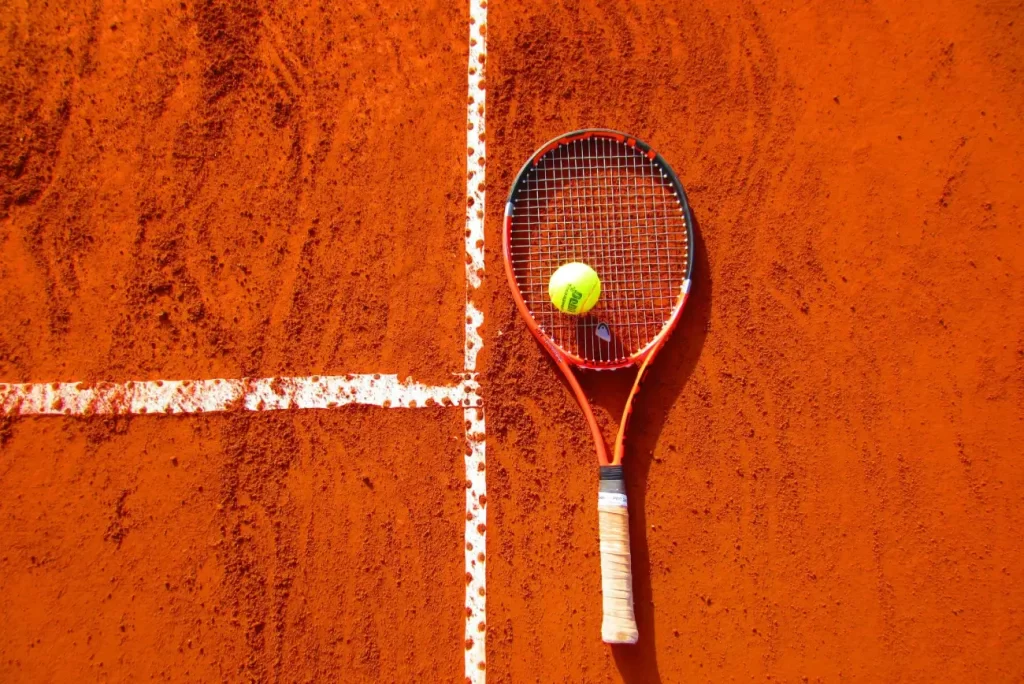
In tennis, players aim to win six games to claim a set. The catch is – they must win by at least two games. This rule keeps matches exciting and competitive. If the score hits 6-6, it’s time for a tiebreak game.
This special game decides who takes the set, adding an extra layer of strategy.
Tie-breaks add suspense; imagine watching a grand slam event where every point can tip the balance! Players serve alternately in this crucial game until one player leads by two points, claiming victory in the set.
Whether it’s at Wimbledon or the Australian Open, mastering set scoring is key for players aiming to dominate on court.
Detailed Explanation of Tennis Scoring
Diving into tennis scoring feels like unraveling a mystery with its own unique language and rules. You’ll find the journey from learning how to score a single point to understanding the flow of an entire match both intriguing and rewarding.
Scoring a Game
Scoring in tennis starts simple but gets exciting quickly. A player wins a game by scoring four points, named 15, 30, 40, and then the final point that seals the game. The journey from love (zero) to victory holds suspense at every serve.
It’s not just about hitting the ball over the net; it’s a strategic battle to outplay your opponent.
Reaching 40-40 means things just got real—welcome to deuce. Here, a player must score two straight points to clinch the game. This rule adds a layer of intensity, making each rally crucial and every point a potential game-changer.
No lead is safe until that final winning shot lands inside the court and out of bounds becomes an echo of what might have been.
Scoring a Set
To win a set in tennis, a player needs to notch up six games and be at least two games ahead. If both players reach six games, the set dives into a tiebreak to break the deadlock. This moment can get pretty intense as it’s not just about skills but also mental toughness.
During a tie-break, every single point counts more than ever. It’s like each serve and return could decide your fate in the match. Players rally back and forth until one outpaces the other by reaching seven points first—and remember, they must still win by two clear points.
These rules ensure that matches are fair and only the best performance earns victory on the court.
Scoring a Match
A tennis match can go the distance, especially during majors like the French Open or Wimbledon. Players aim to win either a best-of-three or best-of-five sets format. This means they need to secure victories in two sets for a shorter match or three for those epic showdowns seen at Grand Slams.
The rule of thumb is simple – more set wins lead to victory, showcasing stamina and skill on the court.
For each player, every set counts as they battle through rounds in single-elimination brackets at major tournaments. Securing a two-set advantage often spells success in best-of-three formats, while pushing past an opponent in three out of five sets captures wins at majors like Roland Garros and Wimbledon.
With eyes fixed on becoming champions, competitors must adapt their strategies within these frameworks to outlast adversaries. Next up, let’s dive into understanding tennis scoring terms like “deuce” and “advantage”.
Understanding Tennis Scoring Terms
Diving into tennis scoring terms unlocks the game’s secrets, keeping you on the edge of your seat as you learn to follow every serve and volley like a pro—get ready for a whole new level of enjoyment!
Deuce
Deuce happens in a tennis game when both players reach 40 points each. It’s like the scoreboard resets, but with higher stakes. The game doesn’t end at deuce; instead, one player must score two consecutive points to clinch the victory.
This twist can turn the tide of a match, making every point critical.
After hitting deuce, the next point is a big deal. If a player wins it, they get the “advantage.” However, if they lose the following point, it’s back to deuce again. This pattern can repeat until someone breaks through by winning two points in a row.
High tension and strategic play come into sharp focus during these moments, showcasing mental toughness and competitive spirit.
Advantage
In tennis scoring, after a game reaches a 40-40 tie, known as deuce, the next point is crucial. The player who wins this point gets “advantage.” This means they’re just one step away from clinching the game.
But it’s not over yet—the player must win another consecutive point to seal the victory. If they lose the following point, the score returns to deuce.
Having advantage puts pressure on both players. The server aims to use powerful serves or smart plays to maintain their lead. Meanwhile, the receiver tries hard to break back and level up again at deuce.
This back-and-forth can happen many times before a player finally wins two points in a row post-deuce for the game win. Let’s move on now and discuss “Love”.
Love
Love in tennis scores means zero. It’s like having no points at all. This term comes from the French word “l’oeuf,” which looks like an egg, symbolizing the shape of a zero. So, when you hear a score like “15-love,” it means one player has 15 points, and the other has none.
Scoring with love isn’t where players aim to be – everyone wants to avoid those eggs! Next up is understanding deuce, another quirky part of tennis scoring that keeps matches exciting.
Alternative Scoring Systems
Tennis has different ways to keep score, spicing things up for players and fans. Some of these include the fast-paced No-Ad scoring and the intense Tiebreak scoring that decides a set’s fate.
No-Ad Scoring
No-Ad scoring is a fast-paced way to play tennis. Instead of needing two consecutive points to win from deuce, players only need one. This rule makes games quicker and adds pressure.
It’s popular in college matches and some pro events. The server chooses which side to serve for this deciding point.
This system keeps matches exciting and unpredictable. Fans and players alike enjoy the thrill of a single point determining a game’s outcome. No-Ad scoring can also shorten long matches, making it easier for tournaments to stay on schedule.
Tiebreak Scoring
Shifting from the simplicity of No-Ad scoring, tiebreak scoring adds a twist to tennis matches. This method comes into play when players are tied at 6-6 in a set. They then dive into a tiebreak game to decide the set winner.
Players alternate serves and the first to reach seven points—provided they lead by at least two points—claims victory in the set. This rule keeps matches from stretching too long.
The four Grand Slams standardized their approach in March 2022 for final-set tiebreaks, aiming for consistency across major tournaments. Once locked at 6-6 in the deciding set, players embark on this format to break the deadlock.
It’s crucial not just for keeping time checks but also for testing mental toughness and strategic play under pressure. Tiebreaks demand precision and nerve control; winning often hinges on who can hold their focus and execute under stress.
Strategies and Tactics in Building Points
Players use smart strategies to win points in tennis. A popular method is serving powerfully or placing the serve where the opponent can’t easily return it, like aiming for an ace.
They also might try hitting the ball deep into the opposite court to push their rival back, making it hard to hit a strong return. Mixing speeds and spins confuses opponents, keeping them guessing.
Crafting points with patience pays off too. Some players wait for just the right moment to strike a winning shot, often after a long rally when their opponent might be tired or out of position.
Hitting shots with precision along the baseline or sharply across the court forces errors or opens up spaces for scoring. Always staying on your toes and reading the game helps make these split-second decisions that lead to victory.
Mental Toughness and Competitive Play in Tennis
Building points through strategies and tactics is crucial, but mental toughness steers the ship in competitive tennis play. Champions like Novak Djokovic and Roger Federer shine not just for their skillful strokes or swift footwork.
It’s their ability to stay focused, calm under pressure, and bounce back from setbacks that set them apart. Picture facing a match point in the fifth set at Wimbledon or battling through tiebreakers at the U.S. Open; these moments demand more than physical prowess.
The mind becomes the most powerful tool on court.
Tennis matches often swing on razor-thin margins—think of John Isner versus Nicolas Mahut at Wimbledon, the longest professional tennis match in history. In such grueling encounters, mental resilience can tip the scales.
Players must manage their emotions, block out distractions, and maintain belief in themselves—even when down by two sets or facing break points. This inner strength allows them to seize critical points and turn matches around.
Indeed, mastering one’s mental game is as essential as perfecting a serve or forehand in tennis’ grand slam events.
Conclusion
Understanding tennis scoring might seem like decoding a secret language at first, but once you get the hang of it, it’s pretty straightforward. From love to deuce and every point in between, each term tells its own story on the court.
Remember, acing this system doesn’t just boost your watching experience—it sharpens your playing strategy too. So keep these tips in mind next time you’re game-watching or racket-swinging; they could be your ticket to turning those close matches into victories.
Happy playing!
FAQs
1. What’s the basic tennis scoring system?
In tennis, points go from love (zero), to 15, to 30, then 40 and the next point wins the game,, unless it’s a tie at 40-40 — that’s called deuce! To win from there,, you need an advantage set by winning two straight points.
2. How does a tiebreak work?
When players are tied in games, say at 6-6 in a set,, they play what’s known as a tiebreak. They keep scoring points until one player leads by two,,, hitting up scores like “7-5”. In grand slams,, except for deciding sets in some tournaments where they just keep playing!
3. What is a double fault?
A double fault happens when you mess up both your first and second serves,,, giving away a point to your opponent., It’s like missing both shots in basketball — it can really change the game’s momentum!
4. Can matches be short or long?
Yes! Matches can vary greatly in length based on formats — best-of-three sets for most tournaments but grand slams often see men battling out best-of-five sets., And don’t forget about Fast4 or super tiebreaks that mix things up even more.
5. Who had the longest match ever played?
Nicholas Mahut and John Isner hold this not-so-enviable record — their match at Wimbledon lasted over three days,,, with Isner winning finally., Imagine playing tennis longer than some people binge-watch shows on Amazon.com!
6. Why do we call tennis scores so strangely?
Well, no one knows for sure,,, but some think it comes from old French words or maybe even how clock faces looked back in Nicholas Mahut’s day – well,, that might be stretching it since clocks have been around before him! But hey,, tennis likes its quirks, right?
